Key takeaways:
- Creativity in programming emerges from innovative problem-solving and collaboration, often flourishing within constraints.
- Defining constraints can channel creativity, pushing programmers to find clever workarounds and novel solutions.
- Techniques such as adopting a playful mindset, engaging in collaboration, and reflecting on work can significantly enhance creative thinking.
- Setting clear priorities, breaking projects into smaller parts, and imposing time limits can effectively manage constraints and boost creativity.
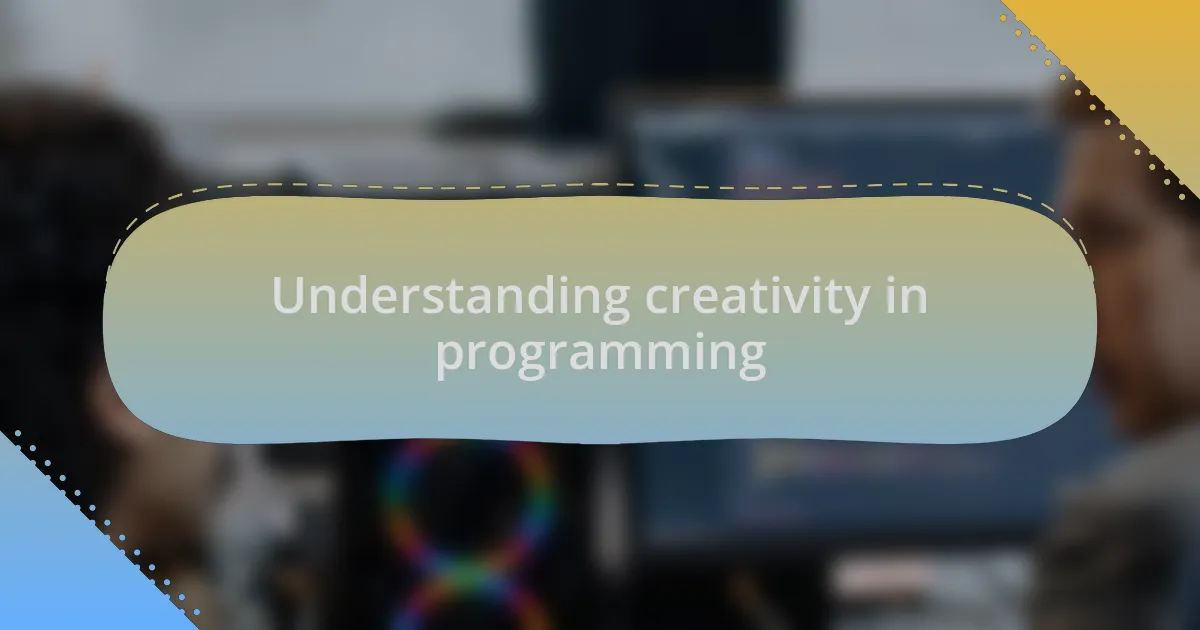
Understanding creativity in programming
Creativity in programming might seem elusive at first, but it often manifests in the way we approach problems. For example, when I encountered a particularly gnarly bug, instead of following the conventional routes, I took a step back and brainstormed a less traditional solution. That unexpected approach not only fixed the issue but also sparked a new method I now apply to many coding challenges.
I often wonder why some coders feel locked in by rules and regulations, while others find liberation within them. I remember a time when I was confined by strict project specifications; however, instead of seeing them as barriers, I used them as a canvas. This shift in mindset allowed me to explore innovative solutions and weave creativity into what initially felt like rigid constraints.
Each line of code we write can be a brushstroke on a vast digital canvas, revealing unique patterns that reflect our thoughts. When I worked on a collaborative project, I’d notice how my teammates would have their own creative spins on the same problem. Their perspectives taught me that creativity isn’t just about individual inspiration; it thrives in collaboration, propelling us toward solutions we might never have conceived alone.
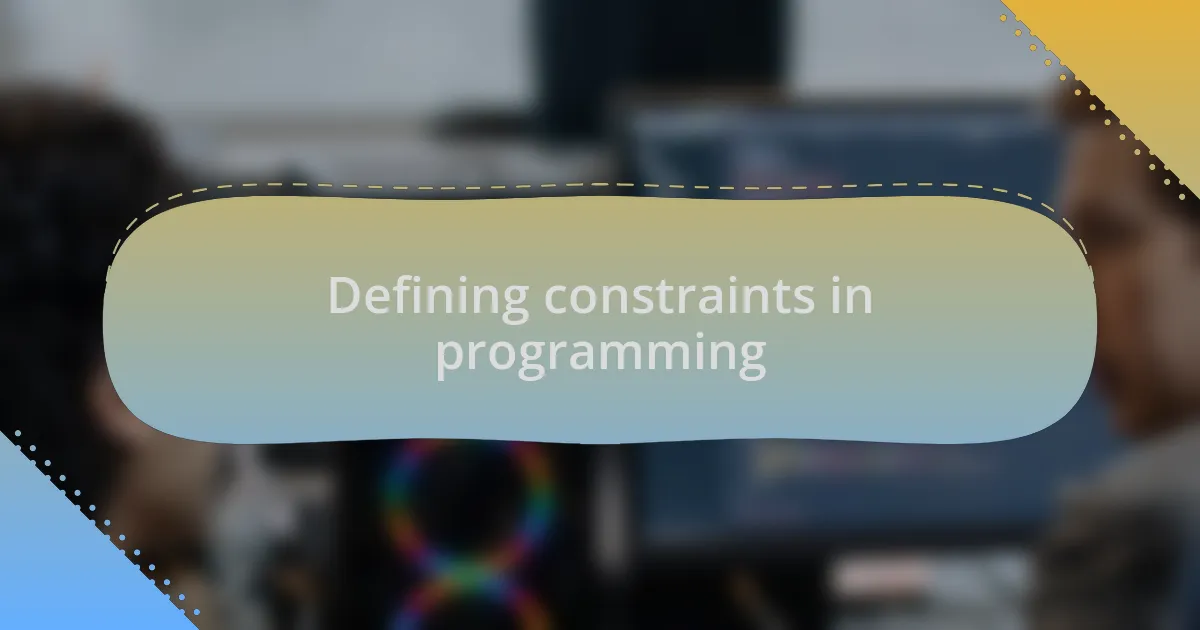
Defining constraints in programming
Defining constraints in programming often feels like placing fences around a vibrant meadow. I recall a time when I was tasked with building a web application under tight deadlines and limited resources. Instead of feeling frustrated by these limitations, I learned to embrace them as guiding parameters, which ultimately led me to innovate within those boundaries.
When I think about constraints, it reminds me of a sculptor chiseling away at a block of stone. The restrictions don’t diminish creativity; they give it shape. For instance, during a hackathon, our team had to develop a solution using only open-source tools. This requirement challenged us to think creatively about how to combine existing technologies and resulted in a project that stood out for its ingenuity.
In a way, constraints can be catalysts for creativity. I’ve noticed how certain programming languages come with built-in limitations that push developers to find clever workarounds. Have you ever struggled with a language’s idiosyncrasies? I certainly have, but those moments forced me to rethink my approaches and often led to more elegant solutions than I would have discovered in an unrestricted environment.
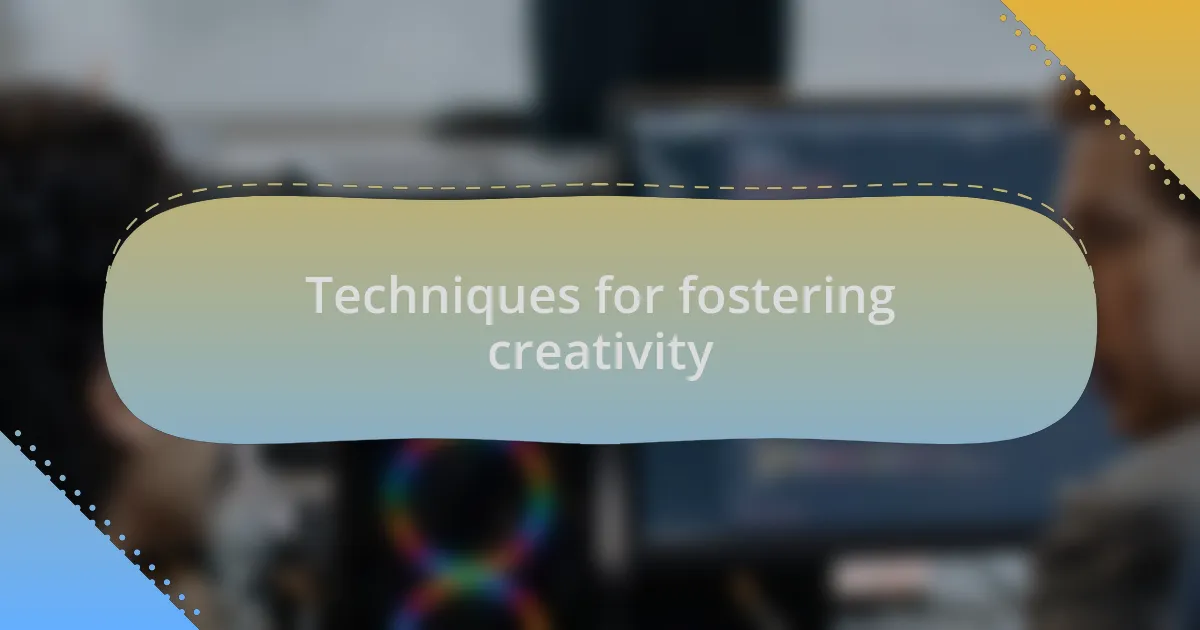
Techniques for fostering creativity
One effective technique for fostering creativity is adopting a playful mindset. I remember a project where I decided to experiment with offbeat ideas rather than sticking to conventional methods. It was liberating! By approaching the task with curiosity, I felt less pressure and more inclined to explore imaginative solutions—like when I integrated a gamification element into a standard user feedback system. Sometimes, letting go of the serious “rules” permits your mind to wander freely and uncover novel ideas.
Another approach I’ve found valuable is collaboration. I often engage with peers to brainstorm concepts and solutions. For instance, in a recent coding group session, we shared different perspectives on a particularly tricky problem. This exchange of ideas prompted me to think outside my usual patterns and ultimately led to a more innovative solution than I would have achieved on my own. Have you ever noticed how a simple conversation can spark your creativity?
Building a routine that includes moments of reflection can also stimulate creative thought. After days of coding, I make it a point to step back and analyze what I’ve accomplished. During these pauses, new ideas often bubble up as I review my work. I find that giving myself this time, away from the screen, can provide clarity and even inspire fresh approaches to ongoing challenges. How often do we forget the power of a little reflection in our fast-paced world?
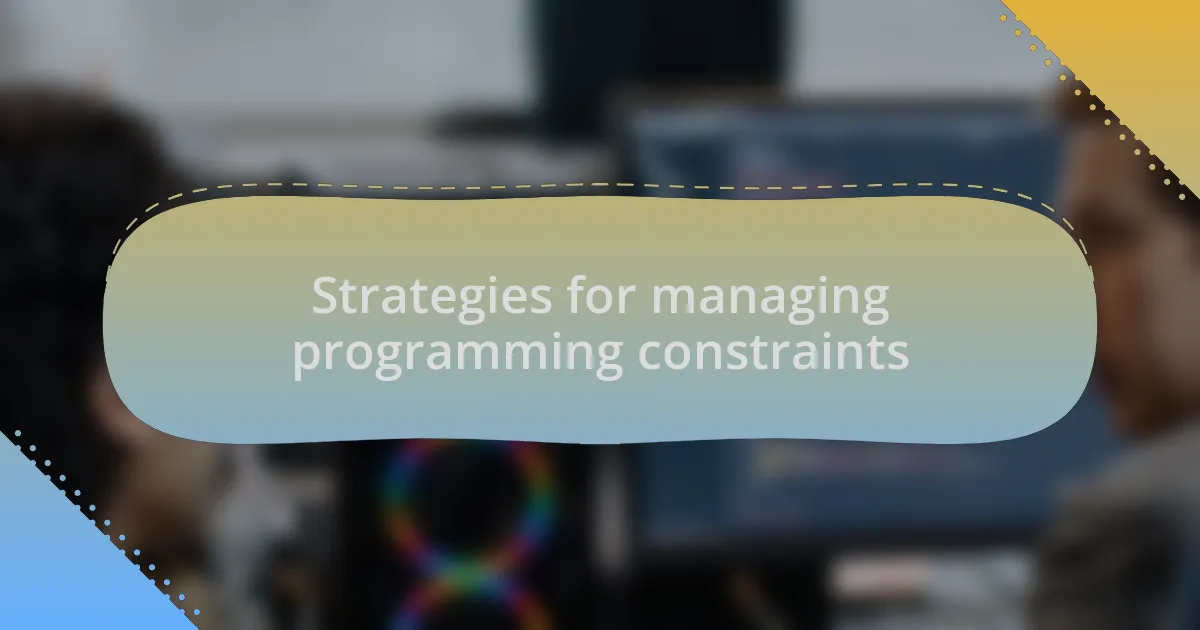
Strategies for managing programming constraints
When managing programming constraints, one effective strategy I’ve embraced is setting clear priorities. I recall a time when I was juggling multiple deadlines on different projects. By listing the constraints and identifying the most critical tasks, I was able to focus my energy where it mattered most. It’s remarkable how a simple priority list can clarify my path and reduce stress. Have you ever tried this method? It can truly transform how you approach your workload.
Another technique I often recommend is breaking projects into smaller, manageable parts. I remember feeling overwhelmed by a large application I was developing. Instead of viewing it as a daunting whole, I began tackling it module by module. This not only simplified the process but also led to faster results, allowing me to maintain my motivation and creativity. It’s like building a puzzle; sorting pieces first makes assembling the final picture a lot more enjoyable and less stressful.
Lastly, I cherish the practice of setting time limits for specific tasks. I once worked on a feature that seemed to stretch forever, draining my enthusiasm along the way. By imposing a self-imposed deadline, I found that I could concentrate better. This urgency pushed me to make quicker decisions and embrace the preliminary solutions that came to mind. Have you experienced how a ticking clock can ignite bursts of creativity? It might just be the nudge you need to break through those programming constraints.
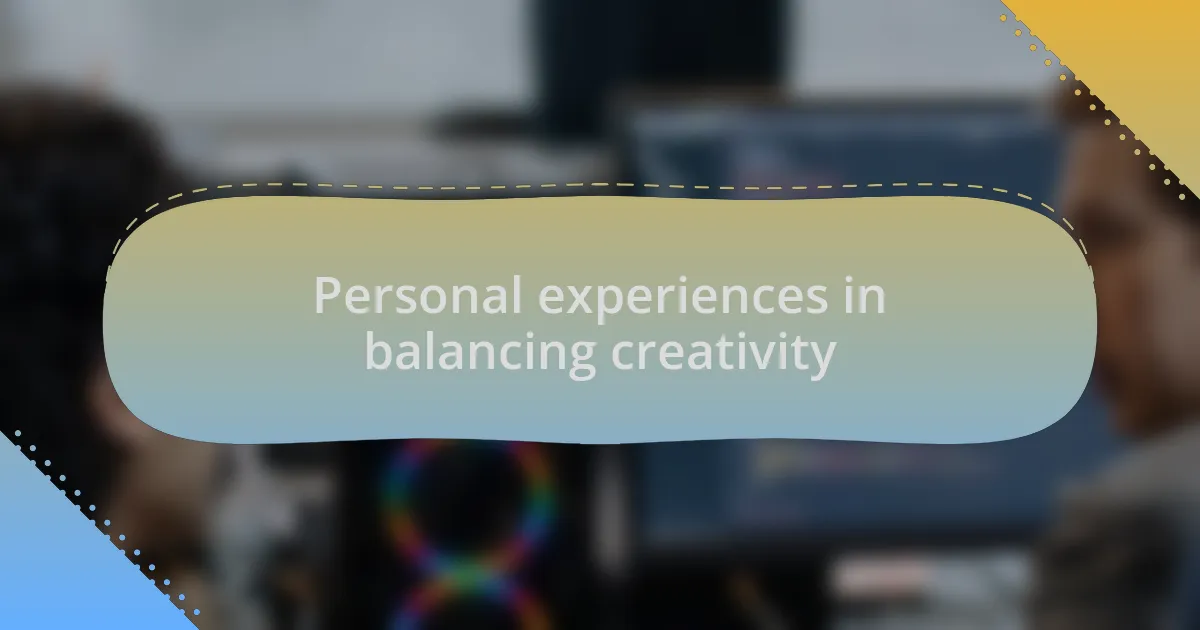
Personal experiences in balancing creativity
There was a project where I wanted to create a visually stunning interface, but the technical limitations were frustrating. I felt a surge of creativity, but there were certain elements I just couldn’t implement due to outdated tools. In that moment, I challenged myself to find alternative solutions that stayed within the constraints yet still reflected my artistic vision. I think it’s fascinating how such limitations can actually lead to unexpected innovations, don’t you agree?
One time, while working on a website redesign, I struggled to keep my artistic flair intact amidst the strict guidelines of the client. It felt like an internal tug-of-war—I craved expressiveness, but I had to adhere to their branding colors and styles. I remember sketching out numerous ideas and, after many revisions, I finally merged my creativity with their requirements. The end result surprised me; it met their vision while I still managed to sprinkle in my unique touch. Has this ever happened to you, where constraints led to a breakthrough moment?
Reflecting on my journey, I’ve learned that creativity often flourishes in the spaces created by constraints. There was a time during a hackathon where we had only 24 hours to build a functional prototype. Initially, the pressure felt stifling, but as the hours ticked away, I realized those very limitations forced me to think more innovatively. Relying on quick brainstorming sessions enhanced the team dynamic and sparked ideas that I wouldn’t have considered otherwise. Isn’t it interesting how urgency can shift our perspective and ultimately enhance our creative output?